There are many things to chop, dice, and slice in the kitchen, having the right kind of knife for chopping will make your cooking effortless. There are many kinds of knives used in the kitchen, one that is most talked about is the vegetable knife vs chef knife.
These knives are different in their blade designs and in their chopping strength. The vegetable knife is best used for chopping vegetables and fruits. Can it cut meat? Yes!, but it will spoil the knife. The chef knife on the other hand is a multiple-purpose knife as it can chop anything in the kitchen.
The vegetable knife vs chef knife differs in their handle also. Unlike the vegetable knife, the chef knife is full-tang which gives balance and strength for easy chopping and dicing. Finally, it is a good idea to have both knives in the kitchen as they are both useful.
VEGETABLE KNIFE VS SANTOKU
Another name for the vegetable knife is the Nakiri knife. The Nakiri and santoku knives are of Japanese origin and have their purposes. The Nakiri knife was designed especially for chopping vegetables and fruits while the santoku which came in the late 1940s is more versatile as it can cut vegetables, meat, and other harder substances.
The Santoku knife is durable, this is why it’s has a lifetime guarantee. Am not here to give reasons why the Santoku knife is better or vice versa. I think I do know is that I prefer the Santoku knife because it makes me feel like a real chef.
READ ALSO: NAKIRI VS GYUTO
READ ALSO: WHAT IS A BONING KNIFE USED FOR?
VEGETABLE KNIFE VS CHEF KNIFE
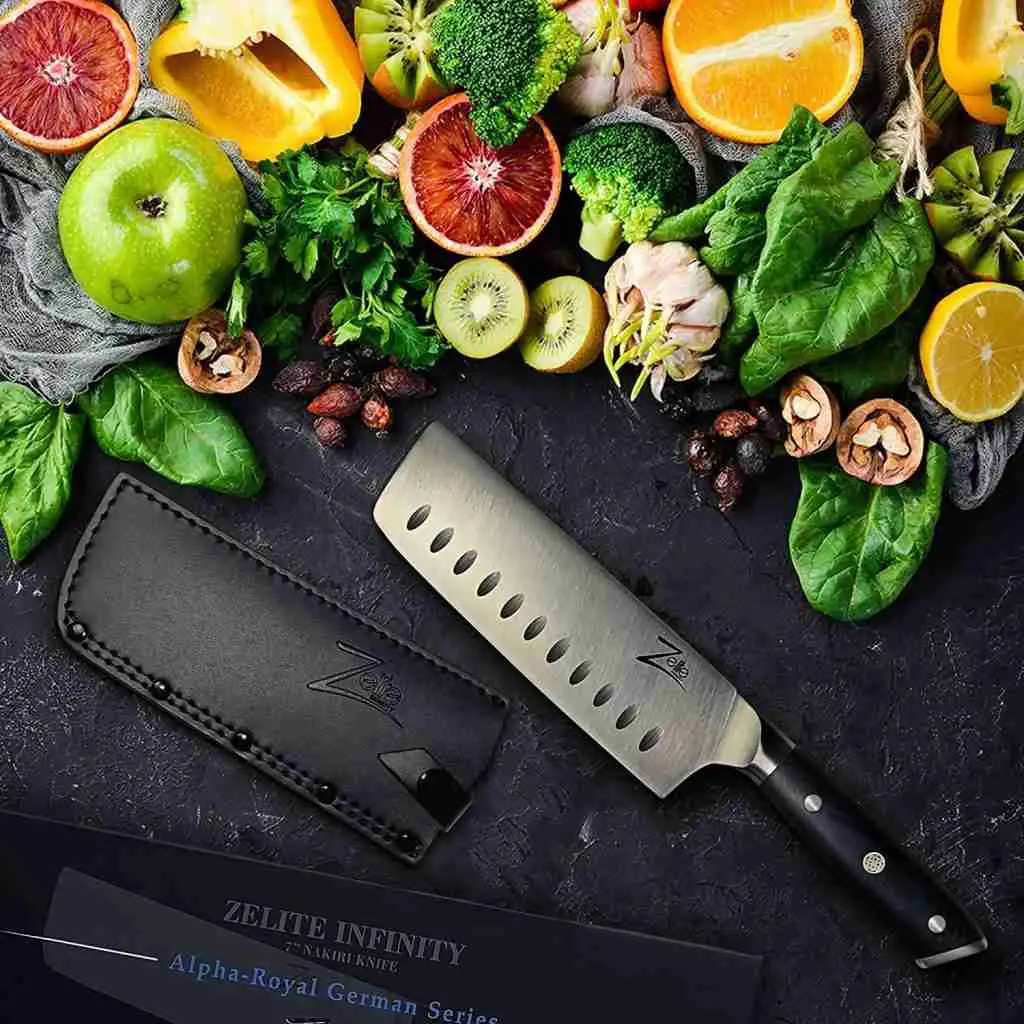
Vegetable knives or knives are specially crafted to specifically mice, dice, and chop your vegetables quickly, easily, and safely while Chef Knife or Knives is a multipurpose professional kitchen knife that can perform the functions of chopping, mincing, slicing, and dicing various food items including vegetables.
Vegetable knives are mostly made up of Damascus glaring polish, the spine of the vegetable knife has no sharp edges while the spine of the chef’s knife is thin and has a fine polish.
Both the Vegetable knife and chef knife have ergonomic comfortable handles but individuals with big hands can easily grip the chef’s knife comfortable handles without stress.
One other distinct feature between the Vegetable and chef knife is that vegetable knives have a greater cut power transferred from your hands to the knife handle because of the short 6 to 7 inches of length while the Chef knife has about 8 to 9 inches of length cut transfer power.

Trapping and cutting deep into vegetables is much easier and faster with a Vegetable knife than with a chef’s knife.
The chef’s knife provides a much greater power slicing and pulling because of the curved design than the vegetable knife.
Examples of the vegetable knife are the Nakiri and Santoku Japanese vegetable knives while examples of the chef knives include J.A. Henckels International chef knives, Konoll chef Japanese knife, and Ytuomzi Professional Pro chef knife.
Final verdict between the vegetable knife vs chef knife; Both knives are efficient and powerful in cutting various food items, choosing one above the other will depend on the kind of food you want to prepare.
READ ALSO: WHAT IS A FILLET KNIFE USED FOR?
READ ALSO: HONESUKI VS BONING KNIFE
CHEF’S KNIFE
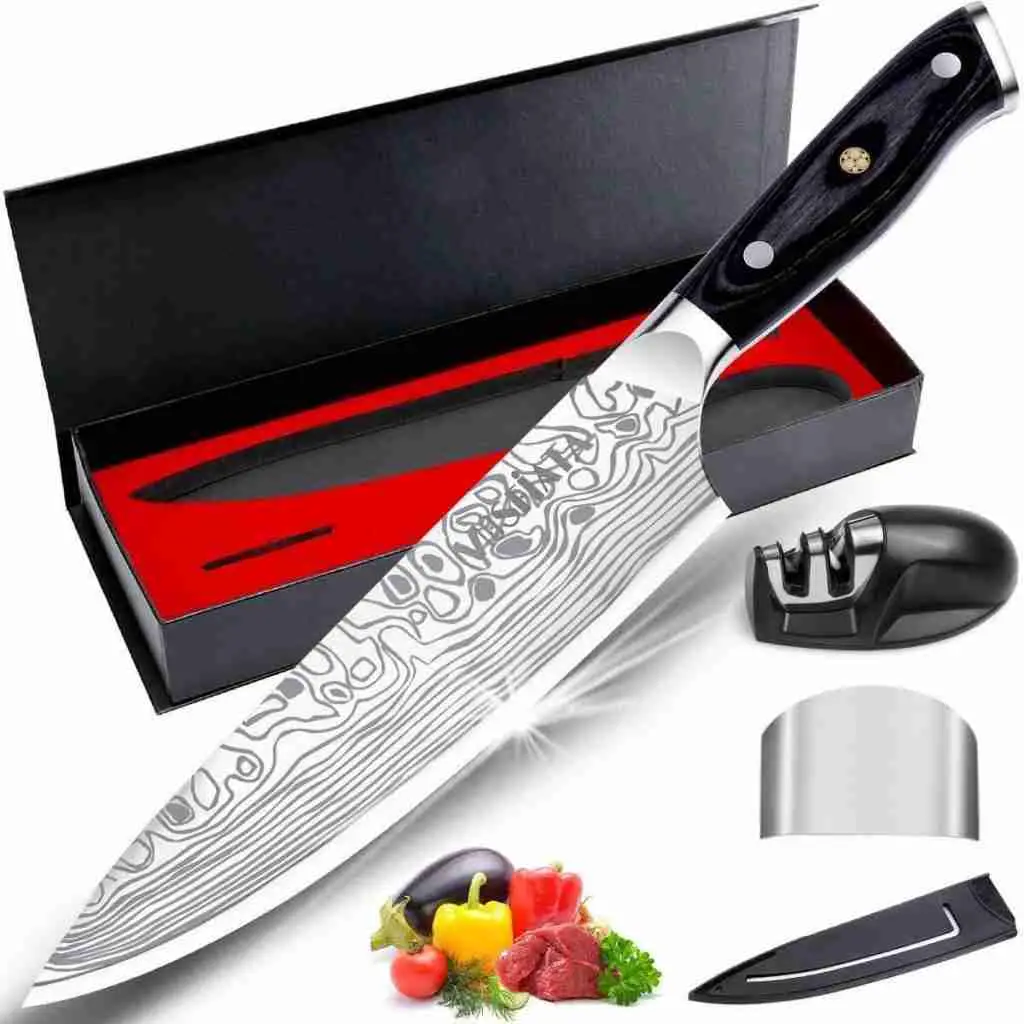
Are you a chef and looking for the knife that will get the job done in your kitchen? If yes, then look no further because I’m here to help you know what to look out for when purchasing a chief’s knife. We all know that a chef’s knife is the major and main workhorse in the kitchen. If you’ve worked with a blunt knife then you’ll understand me.
A good and perfect chef’s knife performs 80% to 90% of cutting tasks in the kitchen without getting blunt. In fact, the sharpness lasts for ages. When purchasing a chef’s knife, go for a very well-built knife with a tang that extends both the full length and height of the handle giving it a nice heft.
A chef’s knife should be comfortable in the hand, weight should be perfect for the size of the blade, and should be well constructed. When I bought my first chief knife, I, first of all, tested it with a paper, and it sliced through a sheet standard copy like a surgical knife. With this, I knew I bought the right knife.
READ ALSO: GARASUKI VS HONESUKI
WHAT IS A CHEF KNIFE USED FOR?

A chef’s knife is one of the most popular knives used daily by professional chefs and food enthusiasts. Some people prefer to call the chef’s knife a cook’s knife as they mean the same thing.
Most chef’s knives have a finely pointed tip, long ergonomic handles, and a broad blade with a straight edge while wide across the heel.
A chef’s knife is used for dicing, mincing, dicing, and chopping various types of food items including potatoes, onions, parsnips, and other vegetables.
The chef knife because of its curved blade has the ability to rock back and forwards on a chopping board. The broad heel area design of the chef knife makes it stand more pressure during heavy-duty chopping work.
Finally, the chef knife is one of the most versatile kitchen knives perfect for everyday cooking and cutting tasks.
SANTOKU KNIFE
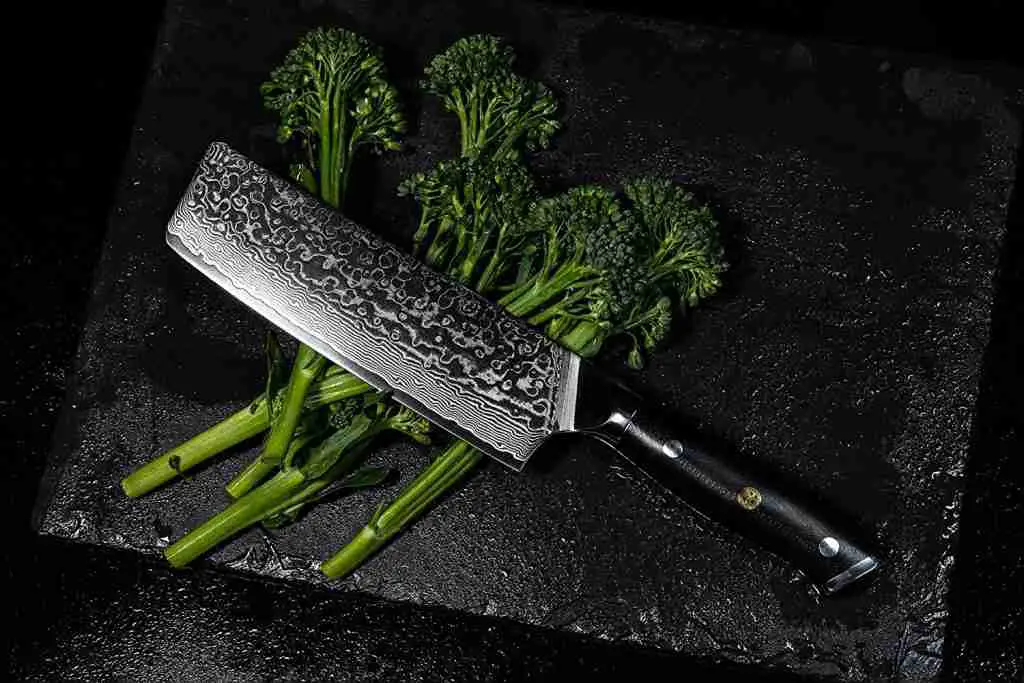
Santoku knife is a high carbon 7-inch Japanese knife with the best cutting edge for all your kitchen daily cutting.
They are also a premium affordable best kitchen knife that is resilient against anti-rust and anti-corrosion as they are made of durable high-quality stainless steel material.
The Santoku premium Japanese knife helps in minimizing finger fatigue and finger numbness when in use.
The Santoku knife is a multi-purpose support chef utility knife that is perfect for slicing, cutting, chopping, preparing meat, fish, vegetables, fruit, or even cheese.
The Santoku knife is suitable for both home and restaurant kitchens. It has been proven to withstand the rigors of tough restaurant use.
The Santoku knife will make a perfect gift knife for weddings and comes in a black gift box.
CHEF KNIFE VS NAKIRI KNIFE
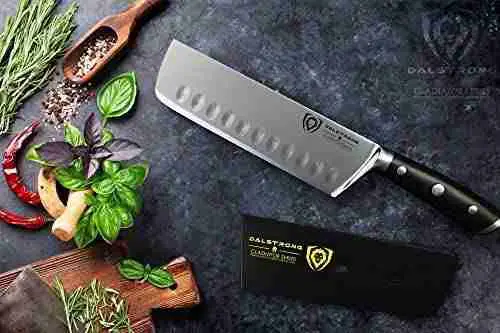
Nakiri knife is sometimes called a Japanese vegetable knife, Nakiri knives look smaller and slimmer. While a Chef knife is commonly called a cook’s knife, has a thin spine design and broad curved design.
Nakiri knives are perfect for lateral chopping while Chef’s knives are perfect for slicing, dicing, mincing and other reacted cutting abilities.

A chef knife has a similar shape to a utility knife and can cut smaller food items and vegetables. While a Nakiri knife is excellent for chopping vegetables because of its square shape and straight edge.
Finally, the Nakiri knives are one of the best tools for larger veg which are often difficult to cut, like sweet potatoes or butternut squash.
SANTOKU KNIFE VS CHEF KNIFE
Chef’s knife or Gourmet specialist’s blade or French blade as normally called, the culinary expert blade, which started in Thiers, France, is regularly produced using carbon steel and treated steel.
The sharp edge of a chef’s expert’s blade is commonly around 8 inches, however, you’ll periodically see a 10-inch cutting edge.
These utilitarian blades have a sharp tip, with a bent twofold incline forefront with a 20 to 25-degree point that permits the client to use the liquid shaking movement procedure while cutting.
The cutting strategy for the chef’s expert blade is somewhat more liquid than that of the Santoku, cook blades are incredible at making fast, uniform cuts.
RELATED: SANTOKU VS CHEF KNIFE
Furthermore, their very sharp tip is ideal for deboning, disjointing, and spatchcocking.
Santoku blades or to give them their complete name Santoku Bochco blades, which deciphers as ‘three uses’, are ideal for mincing, dicing, and cutting, as they include a straight edge with a limited sheep’s foot edge. These blades have developed from the conventional Japanese vegetable blade which has a rectangular cutting edge.
The Santoku blade was made to be an option in contrast to the exemplary Japanese form of a vegetable knife, however, it wound up being substantially more multi-reason than that.
The primary outstanding distinction between a Santoku and culinary expert blade is the cutting strategy utilized by the two blades on a cutting board. When utilizing a culinary specialist blade with its bent edge, you will utilize a liquid to and fro shaking movement to cut and slash (with some piece of the blade continually being in touch with the cutting board).
While the Santoku blade, notwithstanding, utilizes a greater amount of an up-down slashing technique in view of its level edge (with no piece of the blade in touch with the cutting board between cuts).
PARING KNIFE USES
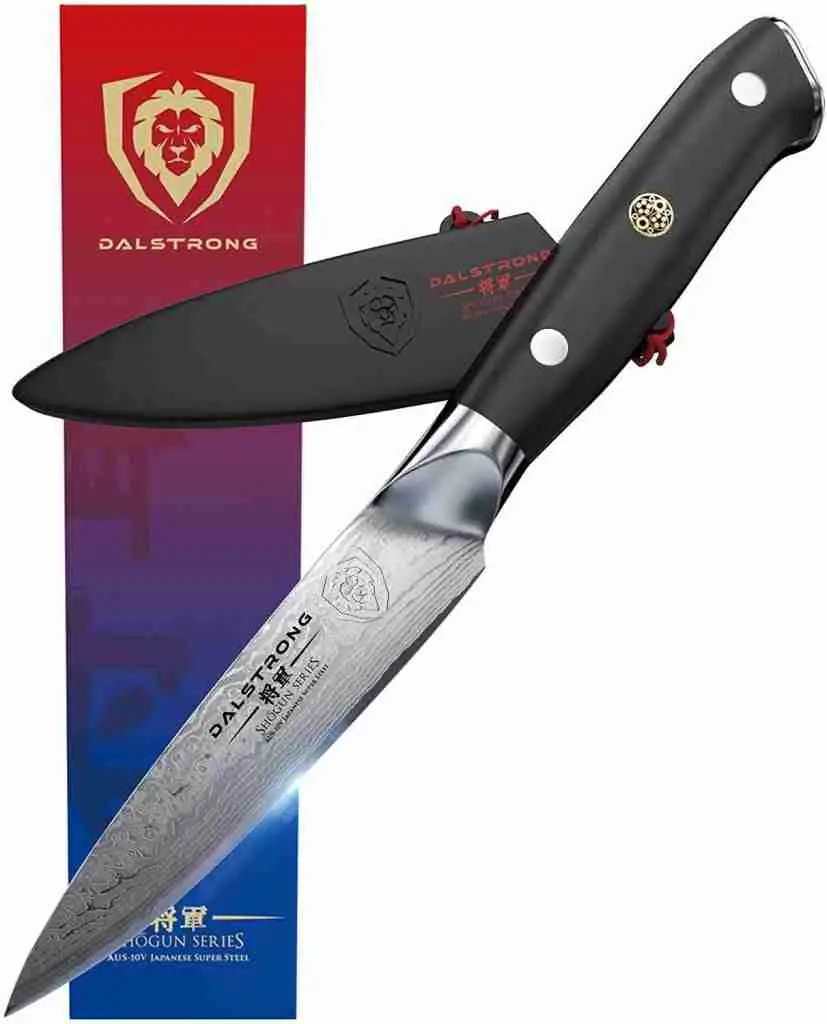
Just like every knife have their strength and is what they are designed for. The paring knife is known for performing detailed tasks like removing seeds from the fruit, used to peel of the skin of fruit easily. They can also perform the task of slicing, dicing, and chopping. Etc. If you are the type that likes to see beauty in food like a piece of art then the paring knife can help you carve out your desired design in your cooking.
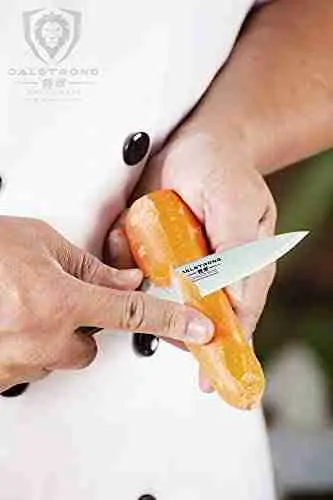
Suggested ways to use paring knife;
- Hulling strawberries, trimming, and cleaning
- Coring tomatoes
- Peeling ingredient
- Deveining shrimp
- Scoring meat
WHAT IS A UTILITY KNIFE USED FOR?
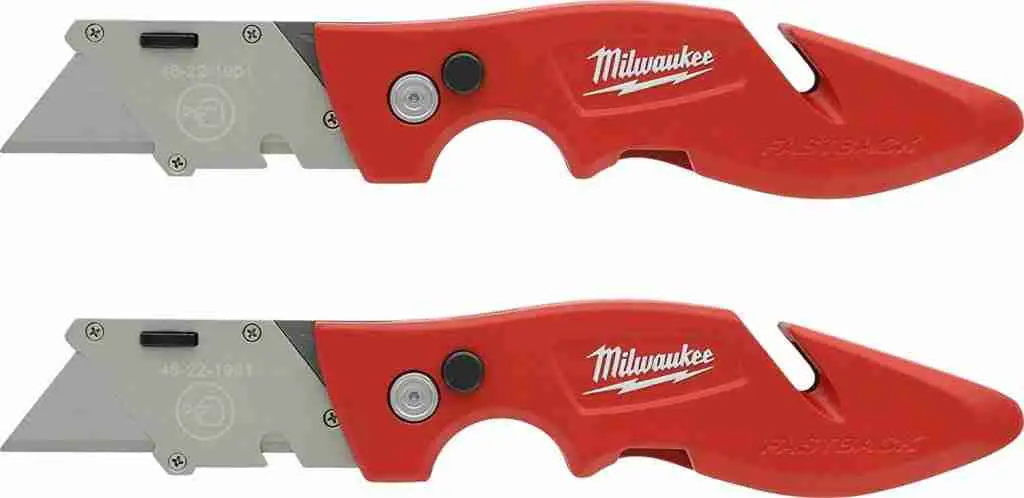
The utility knife is one versatile kitchen tool that has multipurpose use. A utility knife is portable and performs tasks easily. A utility knife can also act as a paring knife, with all of its qualities you already know the question of what a utility knife is used for.
A utility knife is used for chopping, slicing, and dicing. It can slice fruits, chop vegetables. It can be used for another delicate tasks such as carvings and paper cutting.
BUTCHER KNIFE

What is a butcher knife used for? A butcher knife is used for breaking down cuts of meat or trimming the fat. You can find a butcher’s knife in butcher restaurants and shops.
Butcherknife has a slight curve that helps in cutting through meat. So many types of butcher knives feature Granton edges. This allows you to easily slice through meat without tearing or shredding the product.
TYPES OF KITCHEN KNIVES
Buying the right type of kitchen knife does not only make the cutting tasks easier, but it also makes cutting achievable. When you get the right kitchen tool, the preparation of food is faster and safer. But the big question is how do I know the knife that suits my kitchen?
With different types of knives on the market, choosing the perfect knife that suits your kitchen can be very tricky, but knowing the different types of kitchen knives can help you make the right selection.
The different types of kitchen knives are:
- Chef knife: This knife is a must-have in your kitchen because it can be used for almost every cutting task, from chopping to cutting, etc.
- Utility knife: This knife is used for cutting smaller foods and vegetable that is too small for a chef knife.
- Paring knife: This knife is used for cutting, slicing, and chopping fruits and vegetables. This knife is a must-have for you if you love making garnishes for your food and drinks.
- Bread knife: As the name goes, a bread knife is used for cutting bread. A bread knife has a long blade and sharp serrated edge which makes it perfect for sawing all types and sorts of bread.
- Craving knife: This knife is perfect for serving meats like pork, lamb, and poultry.
- Butcherknife: This knife is used to chop raw meat.
- Boning knife: This knife is used for cutting meat bones and trimming cartilage to create the perfect cut or joint before cooking.
SOURCE: SANTOKU KNIFES
SOURCE: SANTOKU VS CHEF KNIFE

5 thoughts on “VEGETABLE KNIFE VS CHEF KNIFE”